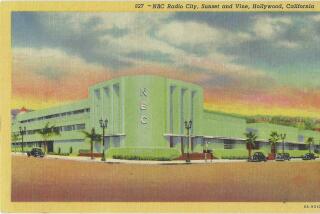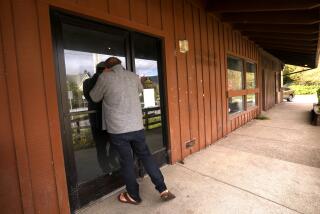‘Nixies’ Earn Their Letters Every Day : Postal Sleuths Strive to Forward Poorly Addressed Mail
After all these years, Herman Haynes knows what to do when he sees a letter addressed to the Veterans Repatriation Hospital in Hollywood, WA.
Why, of course. He forwards it to Western Australia.
And when he sees that an envelope says La California, but has the ZIP code 57010, he knows that the sender is thinking of just that--a community so named in Italy.
Haynes also is well aware that both Northern Ireland and Scotland have towns called Holywood, and that there are Hollywoods in Alabama and Florida.
He isn’t playing a trivia game, but rather is paid for this expertise, one of the strategies the U.S. Postal Service uses to get the mail delivered.
“Any time post offices don’t know where to send something, seems as if they forward it to Los Angeles,” he said, holding up an envelope from a sender in Trinidad to someone in Paris. “We get mail for the darndest people.”
“Nixies” are what Haynes and his fellow experts are called, not to be confused with supporters of the 37th President. The association is more with Sherlock Holmes.
Looking for Clue
Through shift after shift (about four to a shift) they sit at tables in the Terminal Annex downtown, sometimes peering through a magnifying glass, sometimes consulting a nearby phone book or other directory, always looking for that clue that will solve the mystery: Who did the sender of the letter really have in mind?
And to compound the challenge, in these instances the evidence can’t be opened. Only the dead letter office in San Francisco is allowed to open any mail.
“Seeing as that this is the postal area for Hollywood, letters come in from all over the world for celebrities,” said nixie Miguel Corrales, poring over one of about 1,500 pieces of mail he deals with in a typical workday.
“Believe it or not, we still get letters for deceased actresses and actors--John Wayne, Henry Fonda, lately Rick Nelson, even Humphrey Bogart. Quite often the sender just gives the name and the address Hollywood, Calif.”
More often than not, what Corrales and his cohorts do is forward such letters, whether for the quick or the dead, to a local outfit known as United Fan Mail Service.
“We answer fan mail for the stars,” a spokesman for that service disclosed. “They sign up with us, and they get a monthly bill from us depending on how much we do for each one. If we get mail for a performer who isn’t one of our clients, we send it back to the post office.”
The spokesman, who declined to give his name and said the company doesn’t want publicity, added that if a letter to a client is simply for something such as a photo, the service sends a reply in the name of the star. If it is a personal letter, it is forwarded to the performer.
“From what I see, Bob Hope and Frank Sinatra get the most mail,” Corrales observed.
Entertainers aren’t the only notables for whom poorly addressed letters arrive here for disposition. When mail arrives for former President Richard Nixon, it is forwarded to Republican National Headquarters in Washington, for former President Gerald Ford it goes to Rancho Mirage, and for former Gov. Jerry Brown it goes to the State Building.
The Los Angeles Post Office, however, handles more than 4.3 billion pieces of mail a year, and most of it is just for ordinary people. Whenever something undeliverable shows up at any of the 60 city stations (the ones in the Valley have their own nixies), over the river and through the woods, to the Terminal Annex it goes.
The marvelous old structure built in 1939 next to the Union Station (which opened that same year) is the scene of the largest nixie operation in Southern California. And before we go further, to anticipate the question, the origin of the term nixie seems to be lost in history, although there are those who believe it resulted from the German word nicht, which loosely has a negative meaning such as “not.”
Case Resolved
Whatever the case, nixies have been so called for as long as postal people can remember.
One of them, Yvonne McAlpin, looked back, buttons bursting with pride, on a case she had finally resolved after it had stumped the post office for years:
“This one anonymous lady, as it turned out, would send mail to celebrities, about 20 letters a week, but always with nothing more than a 1-cent stamp. The address was just Hollywood, Calif., so we would wind up with the letters. And because of the ridiculous postage, we would send them up to the dead letter office.
“It went on for years, and then one day, for some reason, the lady wrote on one of the envelopes both her name and her address. I was able to send it back to her, stamped both ‘postage due’ and ‘insufficient
address.’ After that we never came across another such letter from her.”
The triumphs, however, are mostly positive ones. As Jimmie D. Swain, supervisor in charge of the nixie section, put it: “These clerks are interested in not sending something back. If they can’t send it to the correct address, they will send it to an address where someone might know where it should go.”
In one corner of the sprawling facility, puzzling over foreign mail, Felix J. Saldutti was thumbing through one of his many tools, a Thomas Bros. map book.
He held up an envelope from Germany addressed to a person on “Carob Way, Los Angeles.” He crossed out Los Angeles and scribbled Montebello. Another, from the Philippines, bore a Los Angeles address, but actually was for a street in Carson. Still another, from Hong Kong, had a Los Angeles ZIP code, but the clerk knew from experience that Gardena was where the letter would be going.
“A lot of people overseas think everything out here is Los Angeles,” the clerk muttered.
Knows Stars’ Addresses
Like many of his fellow nixies, Saldutti knows or has access to information on the actual street addresses of celebrities, which they keep confidential. If an envelope has an address similar to the real one, rather than send the letter to the fan mail service, the postal clerk will write in the correct one.
“See this!” he beamed, producing a weather-beaten booklet. “I found this years ago in the trash. It was going to be discarded, and it has the correct addresses of the stars, the movie studios, the recording companies, the television networks. It’s a gold mine.”
Using it, he was able to pencil in the proper address for a letter almost correctly sent from England to actor Charlton Heston.
“That’s the difference between working in a post office in Des Moines and one in Los Angeles,” Saldutti sighed. “Everybody writes to the stars.”
Haynes commented on actor Jack Nicholson: “Seems like mail for him is never right. But if the street address is about right, I send the letter along to the Beverly Hills post office.”
Hardly a day goes by that a nixie’s life isn’t filled with a vainstorm--some form of human pretension.
“A person, for instance, may live in Culver City, but will tell his distant relatives that he lives in the fancier Century City,” said Haynes, who has been at this task for 20 of his 22 years with the postal service.
“When I see the Culver City ZIP, I know what’s going on and make the address correction.”
Explained nixie supervisor Swain: “We are committed to seeing that the mail is handled as few times as possible. When we get it, it has been some other place before. We are trying to get it delivered on the second try.”
Panties Delivered
And not all mail comes in the familiar envelope or brown wrapping paper. “We’ve seen broomsticks, tires, coconuts--even a pair of panties,” McAlpin said. “They were blue, I remember that. As long as something has the correct address and postage, it gets delivered.”
As are the others, she is well familiar in particular with two abbreviations on mail that sometimes cause it to wind up in front of her--Colorado becomes CO, almost like the shortening of California, and Louisiana becomes LA.
The ingenuity of these sleuths knows no end. Taped above the mail slots in front of Corrales is a facsimile of the row of a typewriter keyboard complete with the symbols atop each number. “Sometimes a secretary typing an envelope will accidentally press the shift key and strike the symbol,” he said.
On occasion, as in the case of the address on a bill that should show up in the see-through window on an envelope, the solution is simply to tap until the hitherto hidden address appears, and then crease the envelope so the writing remains visible.
The nixies themselves ponder separate types of mail. Corrales unriddles first class domestic mail, McAlpin handles second class (publications), Haynes interprets flats (parcels and anything larger than letter size), and Saldutti specializes in foreign mail.
Can’t Solve All
While they all use ZIP code directories, phone books, college guides, atlases, even personally maintained loose-leaf binders containing information each has developed, Saldutti has an additional one: “The Stamp Collector’s Guide and Companion.”
His isn’t for hobby purposes, but there does come a point where the only course of action is to return a piece of mail to the sender. “Even the best detective can’t solve all cases,” he philosophized. “In a case where something from a foreign nation comes with a metered stamp, this guide gives me a clue as to which nation I should get the mail.” Everywhere, almost inexorably, the quantity of mail mounts. Nationally, mail volume per capita in 1984 was 540 pieces, compared with six pieces in 1847.
In those days, however, envelopes weren’t used, according to the postal service. A letter was folded and the address written on the outside of the sheet. Still to come were envelopes. And compulsory use of stamps. And nixies.
More to Read
Sign up for Essential California
The most important California stories and recommendations in your inbox every morning.
You may occasionally receive promotional content from the Los Angeles Times.










